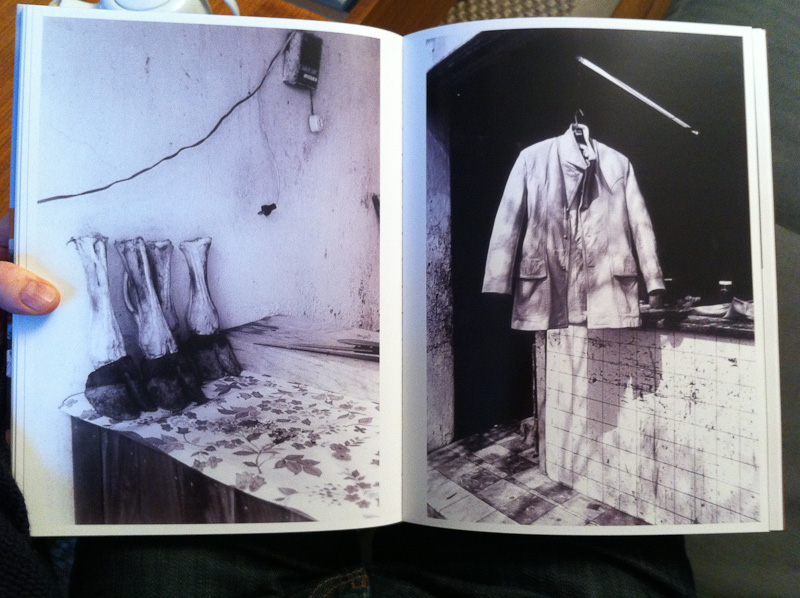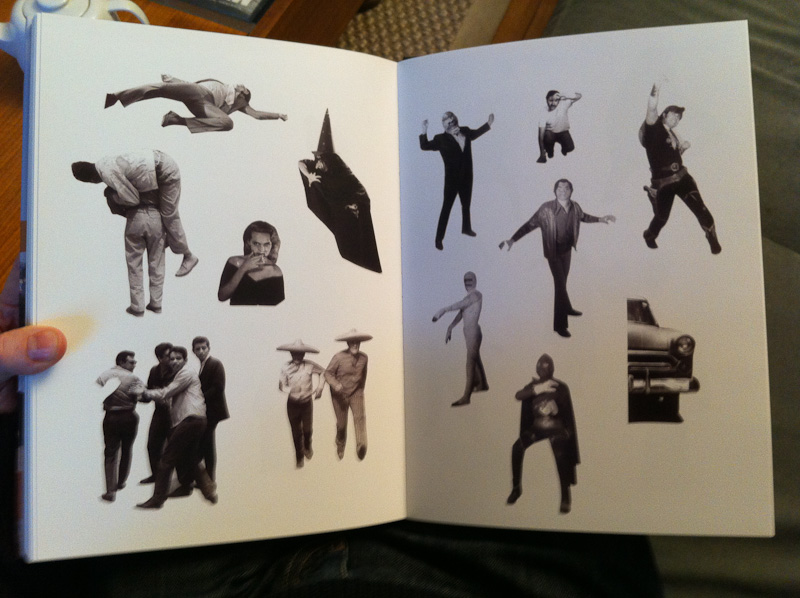Le Bal's latest exhibition, Foto/Gráfica: Une nouvelle histoire des livres de photographie latino-américains (A New History of Latin-American Photobooks) opened last week. The show is based on a selection of 40 books taken from Horacio Fernandez's recently published book on books, The Latin-American Photobook (Aperture, 2011). This is not Le Bal's first photobook exhibition—they presented Japanese Photobooks Now in the summer of 2011—but it is the first time that they have devoted their entire space to an exhibition of books. Following this show they will be hosting the 5th International Fotobook Festival, which is traditionally held in Kassel, so it seems that photobooks are becoming one of the major areas of focus of their programme.
According to Martin Parr, Latin-American photobooks "are the best kept secret in the history of photography"... one of the many secrets that are being steadily revealed by Parr and/or Aperture through The Photobook: A History series, Japanese Photobooks of the 1960s and '70s and a forthcoming book on Chinese photobooks that Parr is doing with WassinkLundgren chez Aperture. The 'books on books' phenomenon is gaining so much traction that Andreas Schmidt, a pleasingly disruptive photobook maker, is already looking forward to the book on books on books which surely can't be too far away. As for Parr's quote, I am willing to take his word for it, knowing absolutely nothing about Latin-Amercian photobooks (with a few Mexican exceptions) and having had very few opportunities to see any.
I was particularly interested to see how Le Bal would take on this subject. Although there appears to be a growing trend for exhibiting books, the ones I have seen so far have generally been disappointing. Books are not an easy thing to exhibit, in fact they are exhibition-resistant in my view. Most people's preferred position for reading or looking at books is sitting down and they are generally consumed by one person at a time, things that are difficult to replicate in an exhibition context. Exhibitions do not encourage visitors to touch the works on display, making it difficult to display more than one spread, something which is painfully reductive unless multiple copies of each book displayed can be tracked down. I think the key in exhibiting books is in overcoming these obstacles by recreating the immersive experience of a book in a way that goes beyond the experience of going into a very good bookstore.
In addition to the basic difficulties of exhibiting books, Le Bal's space is far from huge whereas Latin America is on the large side and presumably has produced a decent number of interesting photobooks over the years. This poses the additional challenge of avoiding the exhibition equivalent of a 'best of' compilation album. To borrow the strapline from a random 'Best of Latin America' compilation, this could have been "a lively exhibition filled with hot and spicy Latin American photoboks!" which would probably have given me a severe case of indigestion.
Thankfully the exhibition successfully avoids most of these pitfalls. Rather than structuring the exhibition around individual countries, it is broken up into a series of sections: history and propaganda, urban photography, photographic essays, artist books, literature and photography, and contemporary books. These categories go beyond the traditional bounds of the photobook, expanding its definition to something like 'books that contain photography,' which makes the terrain far more diverse and interesting, bringing in books such as the revolutionary propaganda tome, Sartre Visite a Cuba (1960) or Auto-photos (1978) an artist book documenting a performance. There is enough material in each of the sections to whet the appetite, but without requiring you to spend several hours in the exhibition space just to cover all the material on display.
The scénographie of Foto/Gráfica is particularly good, the best I have seen for a photobook exhibition. Firstly, in order to tackle the issue of displaying more than one spread from each book, the organizers have decided to go down the road of sacrifice and cut the books up so that a series of spreads can be displayed (there are clearly enough copies of these books to spare, as book-surgery is not the kind of thing that could be done with an exhibition of rare Japanese photobooks for example). The books are displayed in a variety of different ways, from 'classic' glass display cases, to superimposed custom shelving units hanging on the walls. The exhibition also makes good use of prints, which are exhibited alongside the books and are a useful reminder of how different these media are. In the downstairs space, the central wall has been covered with scans of the spreads from a single book with a handful of prints displayed in mounts floating on the surface, a very impressive display. I'm posting a few of the official installation views with this post, as my crappy iPhone shots would not do the exhibition justice. By deconstructing the books in these different ways, it makes the viewer think about the form of the book and its specific qualities.
The success of Foto/Gráfica is that it opens itself out beyond Latin American photography to engage with Latin American artistic culture more broadly. By giving politics, literature and other art forms center stage, the exhibition not only provides some much-needed context, but opens up a number of interesting paths of inquiry. Photobook lovers won't need my encouragement to go and see this, but this is one for those that are not book geeks as well. After Paris, the exhibition is travelling to Ivory Press in Madrid, Aperture in New York and to the Museo del Libro y de la Lengua in Buenos-Aires.
Foto/Gráfica, Une nouvelle histoire des livres de photographie latino-américains, Le Bal, 20 January – 8 April 2012.
Rating: Recommended



